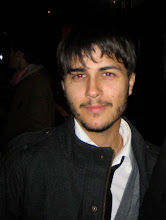
This article in the NYTimes shows the importance of doing a full life cycle assessment on emerging technologies before proceeding forward. The quickest and most important actions that will mitigate climate change- are the modifications of our behaviors and patterns- we can't rely on these new constructed science techniques to come in and save the day.
By JAMES GLANZ in NY Times
Published: December 11, 2009
The company in charge of a California project to extract vast amounts of renewable energy from deep, hot bedrock has removed its drill rig and informed federal officials that the government project will be abandoned.
The project by the company, AltaRock Energy, was the Obama administration’s first major test of geothermal energy as a significant alternative to fossil fuels and the project was being financed with federal Department of Energy money at a site about 100 miles north of San Francisco called the Geysers.
But on Friday, the Energy Department said that AltaRock had given notice this week that “it will not be continuing work at the Geysers” as part of the agency’s geothermal development program.
The project’s apparent collapse comes a day after Swiss government officials permanently shut down a similar project in Basel, because of the damaging earthquakes it produced in 2006 and 2007. Taken together, the two setbacks could change the direction of the Obama administration’s geothermal program, which had raised hopes that the earth’s bedrock could be quickly tapped as a clean and almost limitless energy source.
The Energy Department referred other questions about the project’s shutdown to AltaRock, a startup company based in Seattle. Reached by telephone, the company’s chief operations officer, James T. Turner, confirmed that the rig had been removed but said he had not been informed of the notice that the company had given the government. Two other senior company officials did not respond to requests for comment, and it was unclear whether AltaRock might try to restart the project with private money.
In addition to a $6 million grant from the Energy Department, AltaRock had attracted some $30 million in venture capital from high-profile investors like Google, Khosla Ventures and Kleiner Perkins Caufield & Byers.
“Some of these startup companies got out in front and convinced some venture capitalists that they were very close to commercial deployment,” said Daniel P. Schrag, a professor of geology and director of the Center for the Environment at Harvard University.
Geothermal enthusiasts asserted that drilling miles into hard rock, as required by the technique, could be done quickly and economically with small improvements in existing methods, Professor Schrag said. “What we’ve discovered is that it’s harder to make those improvements than some people believed,” he added.
In fact, AltaRock immediately ran into snags with its drilling, repeatedly snapping off bits in shallow formations called caprock. The project’s safety was also under review at the Energy Department after federal officials said the company had not been entirely forthcoming about the earthquakes produced in Basel in making the case for the Geysers project.
The results of that review have not yet been announced, but the type of geothermal energy explored in Basel and at the Geysers requires fracturing the bedrock then circulating water through the cracks to produce steam. By its nature, fracturing creates earthquakes, though most of them are small.
On Friday, the Energy Department, which has put some $440 million into its geothermal program this year alone, said that despite the latest developments, it remained confident of the technology’s long-term prospects. Many geothermal methods do not require drilling so deep or fracturing bedrock.
“The Department of Energy believes that geothermal energy holds enormous potential to heat our homes and power our economy while decreasing our carbon pollution,” said Stephanie Mueller, a spokeswoman.
AltaRock has also received some $25 million in federal money for a project in Oregon, and some scientists speculated on Friday that after the spate of problems at the Geysers, the company wanted to focus on a new site.
But the company, whose project at the Geysers was located on land leased from the federal government by the Northern California Power Agency, has held information about its project tightly. Not even the power agency has been informed of AltaRock’s ultimate intentions at the site, said Murray Grande, who is in charge of geothermal facilities for the agency.
“They just probably gave up, but we don’t know,” Mr. Grande said. “We have nothing official from them at all.”
But a resident of the nearby town of Anderson Springs, which is already shaken by quakes generated by less ambitious geothermal projects, reacted with jubilation when told it appeared the new project was ending.
“How I feel is beyond anything that words can express,” said the resident, Jacque Felber, who added that an unnerving quake had rattled her property the night before. “I’m just so relieved, because with this going on, I’m afraid one of these days it’s going to knock my house off the hill.”


